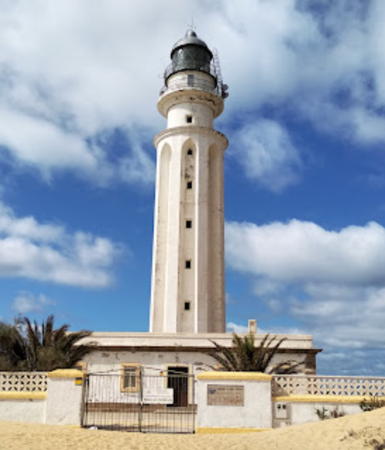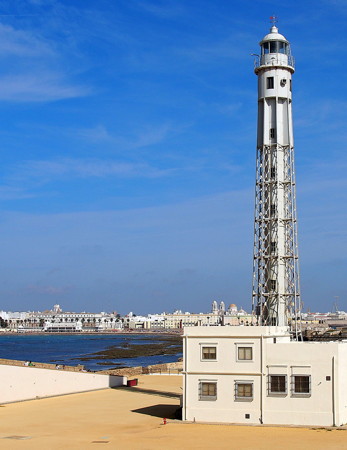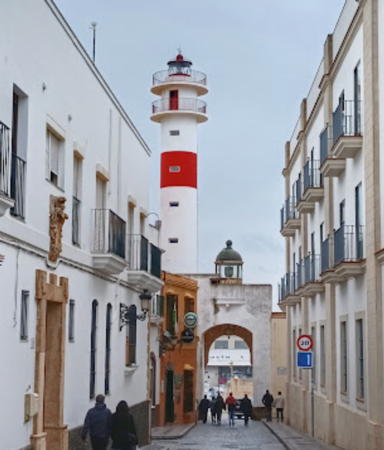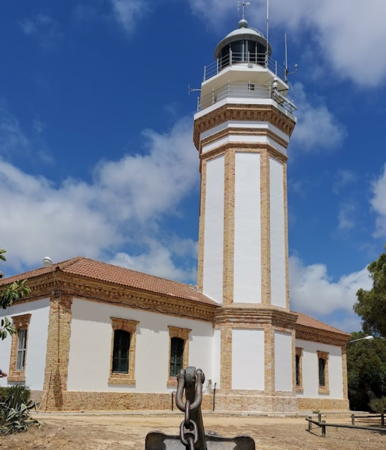The Kingdom of Spain occupies nearly 85% of the Iberian Peninsula in southeastern Europe with coastlines facing south and southeast on the Mediterranean Sea and southwest and northwest on the Atlantic Ocean. Spain also includes the Balearic Islands in the Mediterranean, the Canary Islands in the Atlantic, and the cities of Ceuta and Melilla on the north coast of Morocco.
Since 1978 Spain has been divided into 17 regions called autonomous communities (comunidads autónoma) that have been granted varying degrees of autonomy by the central government. The autonomous communities are subdivided into provinces (provincias). The autonomous community of Andalucía (Andalusia in English) is in the southern part of the country, including the coastal provinces of Almería, Granada, Málaga, Cádiz, and Huelva. The western third of the coast faces southwest on the Atlantic, west of Gibraltar, while the eastern two thirds faces southeast on the Mediterranean. This page includes lighthouses of the Atlantic coast, often called the Costa de la Luz (Coast of Light), in the provinces of Cádiz and Huelva. Lighthouses of the Mediterranean coast are on the Eastern Andalusia page.
The word for a lighthouse is faro in Spanish, but its use is generally restricted to the larger coastal light stations. Smaller lighthouses are called balizas (beacons). In Spanish isla is an island, cabo is a cape, punta is a promontory or point of land, péñon is a rock, arrecife is a reef, bahía is a bay, ría is an estuary or inlet, estrecho is a strait, río is a river, and puerto is a port or harbor.
The navigational lights in Spain are the responsibility of the national port authority, Puertos del Estado, but many of them are operated and maintained by regional port authorities. The Comisión de Faros, founded in 1842 to build and maintain Spanish lighthouses, is now an advisory panel.
ARLHS numbers are from the ARLHS World List of Lights. ES numbers are from the Spanish national list of lights, Libro de Faros. Admiralty numbers are from volume D of the Admiralty List of Lights & Fog Signals. U.S. NGA List numbers are from Publication 113.
- General Sources
- Libro de Faros y Señales de Niebla
- Online edition of the official Spanish light list.
- Asociación de Amigos de los Faros de Andalucía
- This support group for Andalusian lighthouses has an interesting blog with many photos.
- Online List of Lights - Atlantic Spain
- Photos by various photographers posted by Alexander Trabas. Many of the photos for this coast are by Eckhard Meyer.
- Spain Lighthouses
- Excellent aerial photos posted by Marinas.com.
- Leuchttürme.net - Andalucia
- Photos posted by Malte Werning.
- Lighthouses in Andalusia
- Photos by various photographers available from Wikimedia.
- World of Lighthouses - Spain
- Photos by various photographers available from Lightphotos.net.
- Phares d'Europe
- Photos posted by Alain Guyomard and Robert Carceller.
- Navigation and Ships - Lighthouses
- Photos by Fran García.
- Leuchttürme Spaniens auf historischen Postkarten
- Historic postcard images posted by Klaus Huelse.
- GPSNauticalCharts
- Navigational chart information for Andalusia.
- Navionics Charts
- Navigational chart for Spain's Atlantic coast.
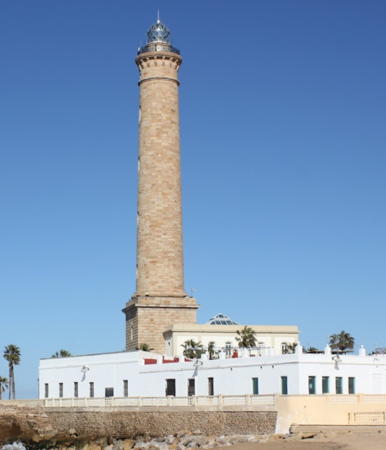
Chipiona Light, Chipiona, January 2023
Google Maps photo by
Igor Fabjan


